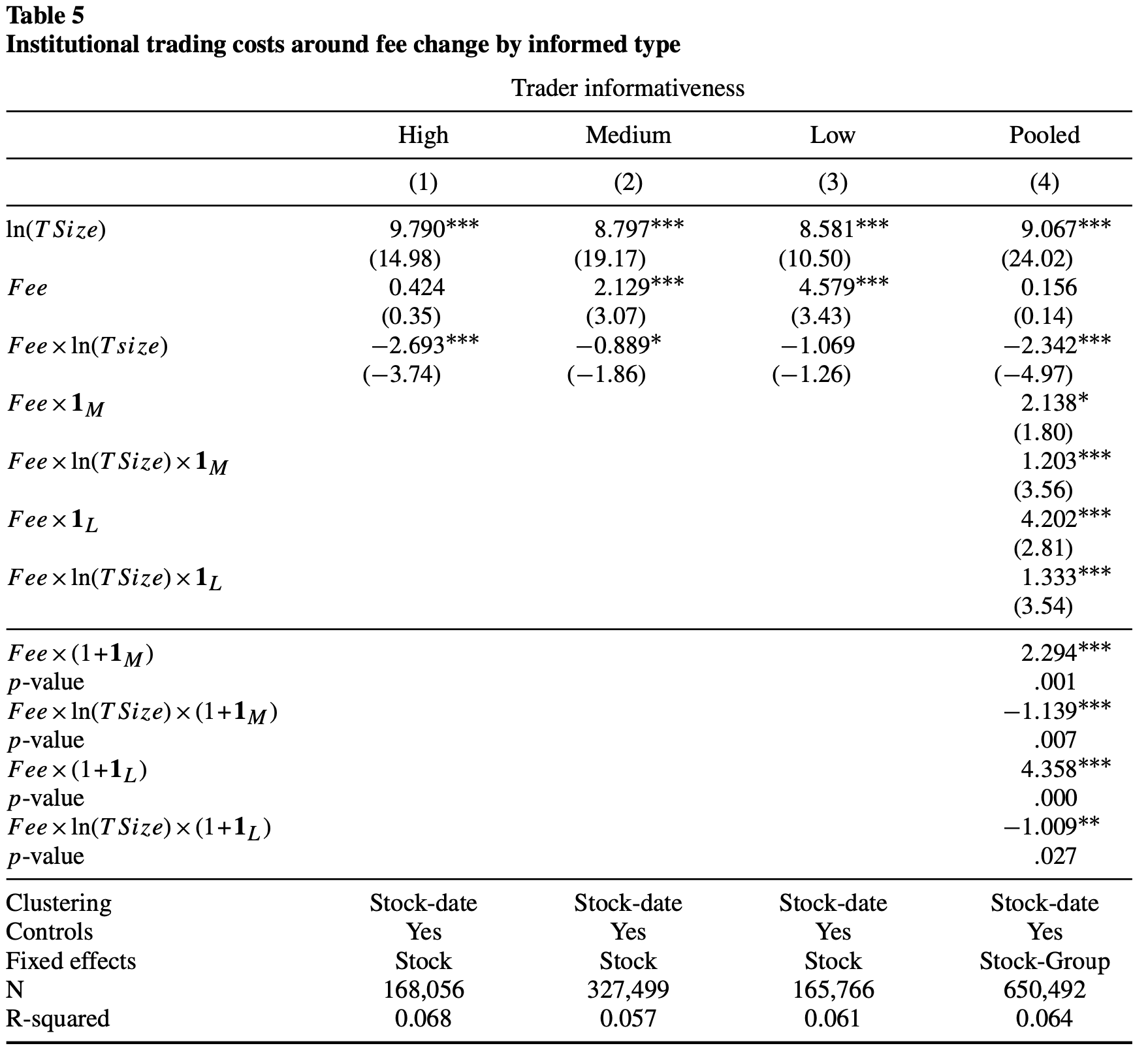💡 Takeaway:
HFTs crowd out large, informed trades using speed and signal-based strategies. When HFT costs rise, institutions trade with less impact.
Key Idea: What Is This Paper About?
The paper investigates how HFTs interact with large institutional trades. It finds that HFTs often detect and compete with informed institutional orders, increasing their trading costs. However, when a regulation raised message fees (hurting HFT speed), price impact for large trades fell—especially for informed traders.
Economic Rationale: Why Should This Work?
📌 Relevant Economic Theories and Justifications:
- Phantom Liquidity (Ait-Sahalia & Saglam): HFTs cancel visible orders just before execution to avoid informed flow.
- Back-Running (Yang & Zhu): HFTs detect and compete with the direction of institutional trades.
- Inventory Risk Models: HFTs aggressively unwind inventories when exposed to directional institutional flows.
📌 Why It Matters:
HFTs improve liquidity for uninformed small trades but reduce execution quality for informed large trades. This creates a trade-off for market efficiency and information acquisition.
Data, Model, and Strategy Implementation
Data Used
- Source: IIROC order-level data (Canada)
- Period: Jan 2012 – June 2013
- Instruments: 181 highly liquid Canadian stocks
- Unique Access: Trader IDs and inventory tracking
Model / Methodology
- Identification of HFTs via sub-250ms cancel times
- Classification of “informed” institutions by post-trade profitability
- Implementation shortfall modeled with log-size and fee regime interactions
- Inventory mean-reversion modeled using 15-minute intervals
- Signal extraction from public data (price returns, trade/order imbalances)
Trading Strategy (Insights Derived)
- If you're an institutional trader:
- Break trades into child orders
- Avoid predictable patterns in execution
- Expect higher impact in presence of fast HFTs
- If you're building an HFT strategy:
- Use past returns, trade imbalances, and order book signals to anticipate institutional flow
- Prioritize inventory control and dynamic limit order updates
- Watch for liquidity withdrawal when signals reverse
Key Table or Figure from the Paper

📌 Explanation:
- Shows that highly informed institutions benefited most from HFT slowdowns
- Their price impact dropped by ~27.5%, unlike other groups
- Confirms HFTs disproportionately hurt skilled institutional traders, not uninformed flow
Final Thought
💡 HFTs sharpen liquidity—but at a cost to informed institutions trying to trade big. 🚀
Paper Details (For Further Reading)
- Title: High-Frequency Market Making to Large Institutional Trades
- Authors: Robert A. Korajczyk, Dermot Murphy
- Publication Year: 2019
- Journal/Source: The Review of Financial Studies
- Link: https://www.jstor.org/stable/10.2307/48616818
